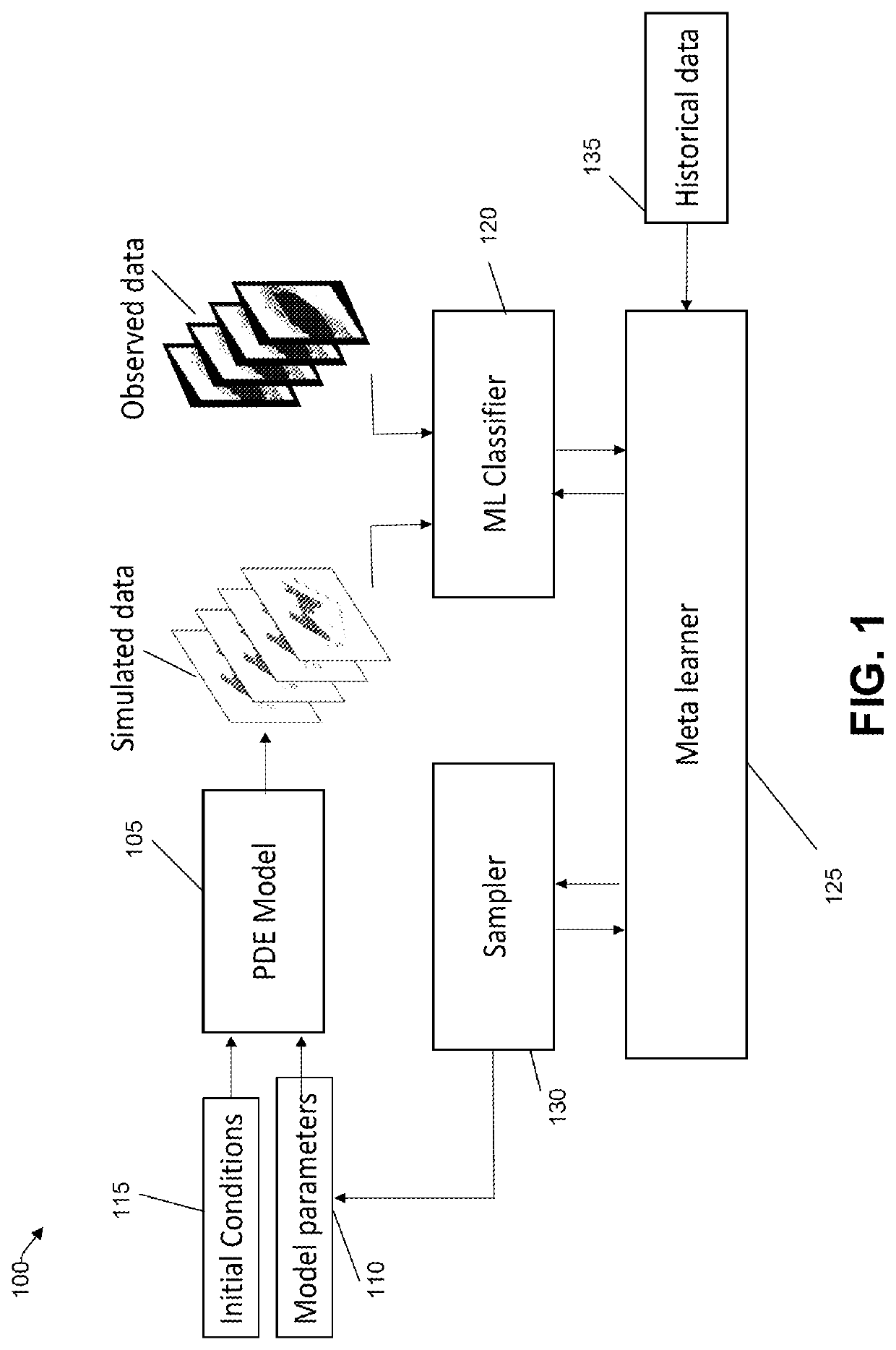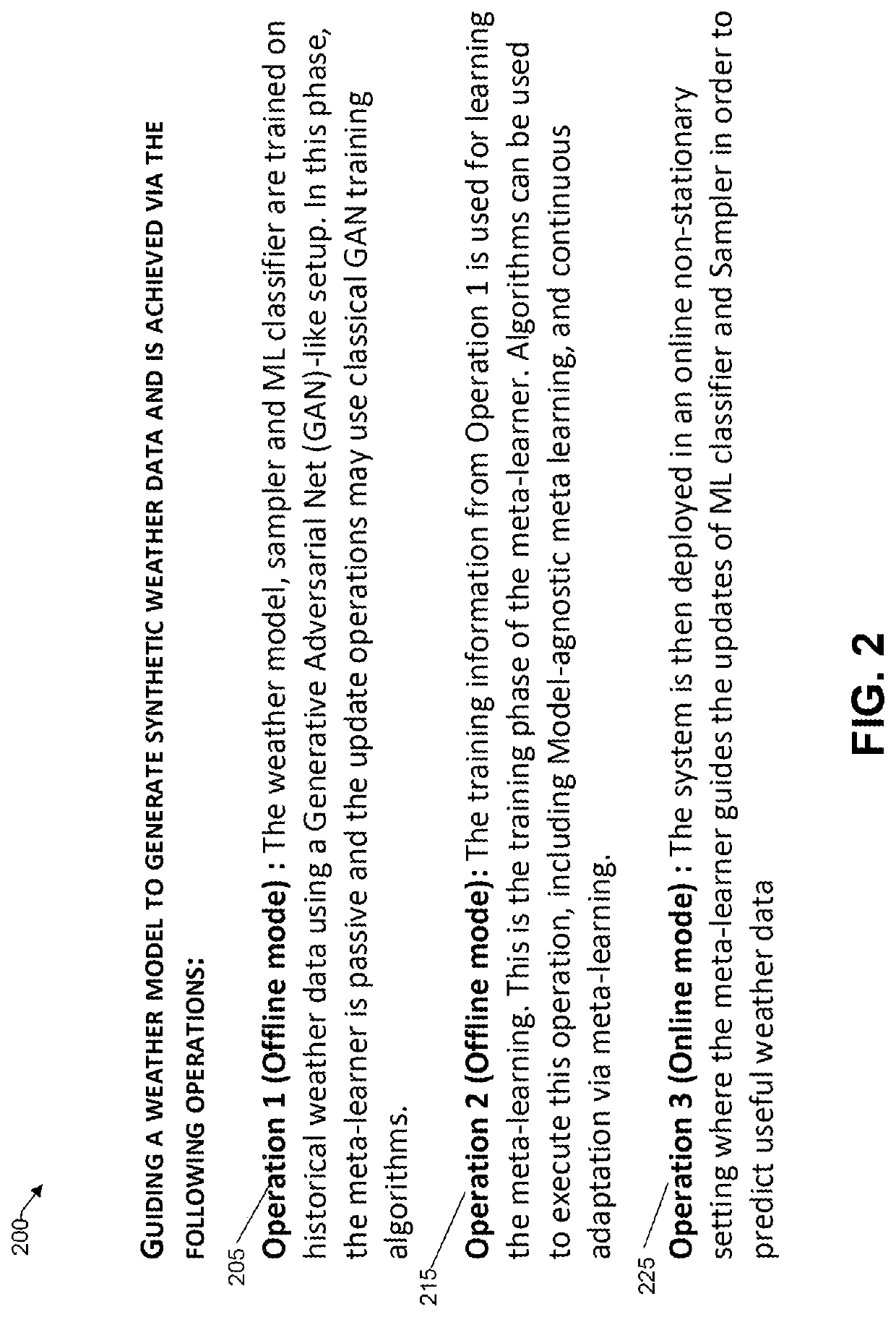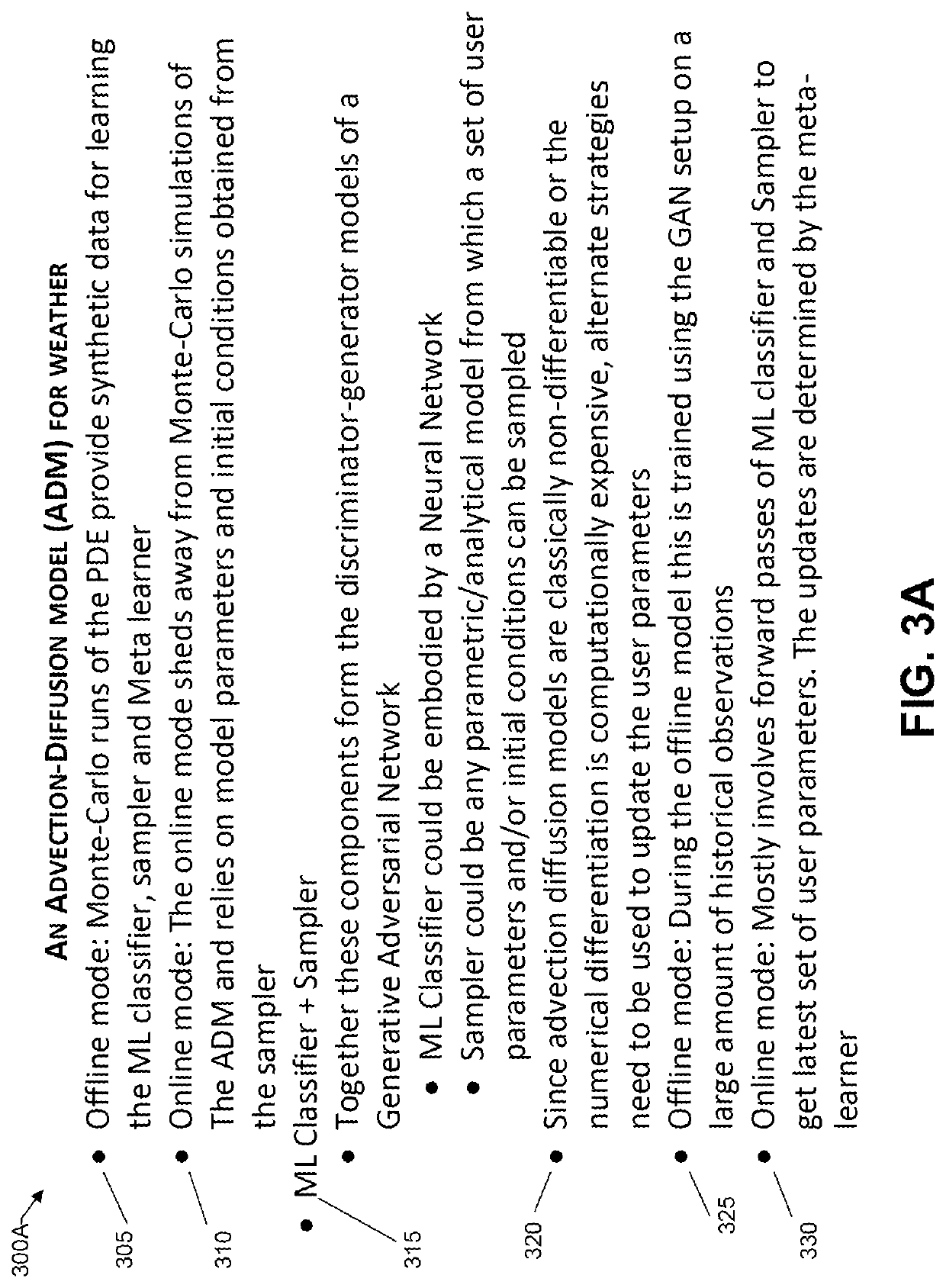System for continuous update of advection-diffusion models with adversarial networks
a technology of adversarial networks and advection-diffusion models, applied in the field of data generation models, can solve the problems of complex parameterization of these models, inability to provide accurate, and high computational costs of all the aforementioned approaches, and achieve the effect of improving the accuracy of data
- Summary
- Abstract
- Description
- Claims
- Application Information
AI Technical Summary
Benefits of technology
Problems solved by technology
Method used
Image
Examples
example architecture
[0037]FIG. 1 provides an architectural overview of a system configured for automatic selection of model parameters, consistent with an illustrative embodiment. FIG. 1 shows a model 105 that generates simulated data based on the model parameters 110 and the initial condition information 115. The model 105 shown is a partial differential equation (PDE) model, other types of models can have their model parameters automatically selected and adjusted consistent with this illustrative embodiment.
[0038]The machine learning (ML) classifier 120 is, for example, a binary classifier that is configured to predict whether the output generated by the model is real or synthetic. In other words, in the field of model generation, the observed data shown in FIG. 1 is considered real data, and the synthetic data is the simulated data generated by the model 105. In general, in an Adversarial Network setting, there can be model-generated simulated data (e.g., samples) of an image, the simulated data bei...
example process
[0053]With the foregoing overview of the example architecture, it may be helpful now to consider a high-level discussion of an example process. To that end, in conjunction with FIGS. 1-3A and 3B, FIG. 4 depicts a flowchart 400 illustrating various aspects of a computer-implemented method, consistent with an illustrative embodiment. Process 400 is illustrated as a collection of blocks, in a logical order, which represents a sequence of operations that can be implemented in hardware, software, or a combination thereof. In the context of software, the blocks represent computer-executable instructions that, when executed by one or more processors, perform the recited operations. Generally, computer-executable instructions may include routines, programs, objects, components, data structures, and the like that perform functions or implement abstract data types. In each process, the order in which the operations are described is not intended to be construed as a limitation, and any number ...
example cloud
Platform
[0065]As discussed above, functions relating to the low bandwidth transmission of high definition video data may include a cloud. It is to be understood that although this disclosure includes a detailed description of cloud computing as discussed herein below, implementation of the teachings recited herein is not limited to a cloud computing environment. Rather, embodiments of the present disclosure are capable of being implemented in conjunction with any other type of computing environment now known or later developed.
[0066]Cloud computing is a model of service delivery for enabling convenient, on-demand network access to a shared pool of configurable computing resources (e.g., networks, network bandwidth, servers, processing, memory, storage, applications, virtual machines, and services) that can be rapidly provisioned and released with minimal management effort or interaction with a provider of the service. This cloud model may include at least five characteristics, at le...
PUM
 Login to View More
Login to View More Abstract
Description
Claims
Application Information
 Login to View More
Login to View More - R&D
- Intellectual Property
- Life Sciences
- Materials
- Tech Scout
- Unparalleled Data Quality
- Higher Quality Content
- 60% Fewer Hallucinations
Browse by: Latest US Patents, China's latest patents, Technical Efficacy Thesaurus, Application Domain, Technology Topic, Popular Technical Reports.
© 2025 PatSnap. All rights reserved.Legal|Privacy policy|Modern Slavery Act Transparency Statement|Sitemap|About US| Contact US: help@patsnap.com



